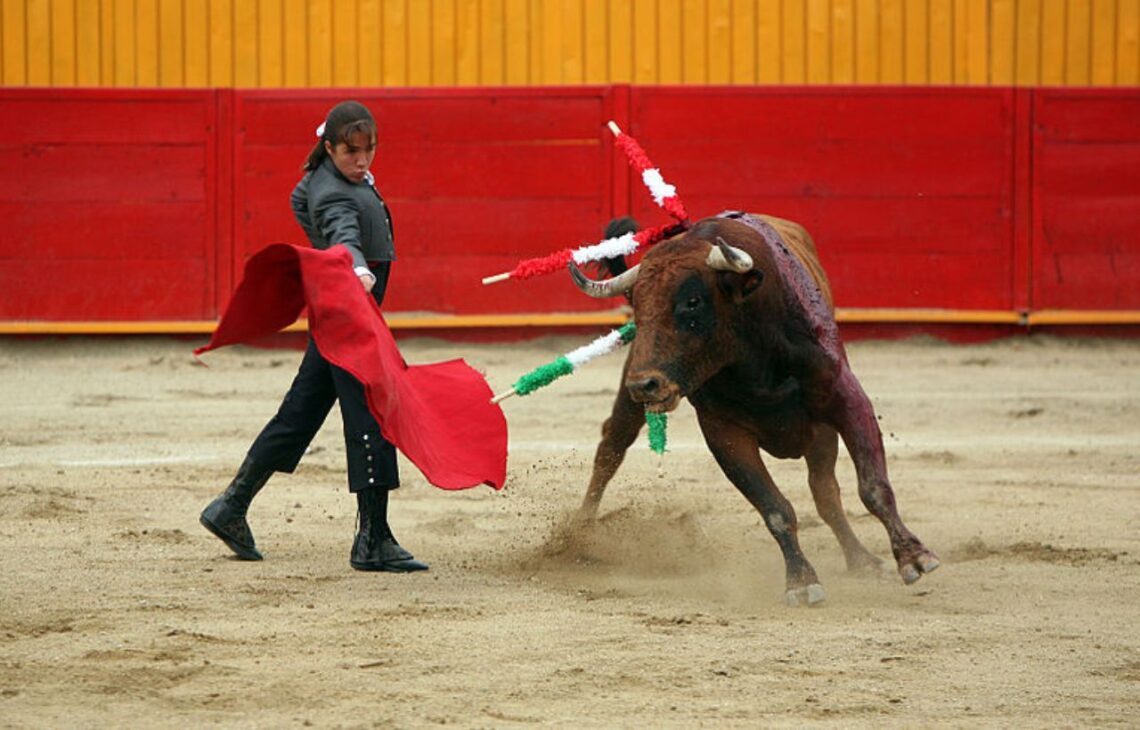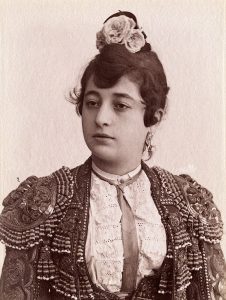
Female Bullfighter
Although the sport (or art, if you prefer) of bullfighting is widely considered to be the essence of masculinity and is, unquestionably, a male-dominated profession, female bullfighters have existed for centuries. In fact, the oldest known record of a woman facing a bull in the arena dates back to the year 1654, from the Castile Council. But even so, women’s participation in Spanish style bullfighting remains controversial – almost as controversial as the practice itself has become.
What is a female bullfighter called?
In the English language, the gender-neutral term ‘bullfighter’ is perfectly acceptable for both men and women. However, considering its strong cultural ties to Spain, it is not unusual for English speakers to borrow the Spanish terms ‘torero’ and ‘matador’. Anyone with a basic knowledge of the language knows that Spanish has grammatical gender and uses different noun forms to refer to men and women in a given profession. So, what do you call a female bullfighter? Masculine nouns in Spanish can be converted to their feminine counterparts in most cases by changing the final ‘o’ to an ‘a’ or, in the case of words ending in the suffix ‘-dor’, by adding an ‘a’ onto the end. This leaves us, respectively, with the words ‘torera’ and ‘matadora’. These are the accepted terms used to describe a female bullfighter, although other terms may also be used depending on the specific function they perform in the fight. In these cases, the same rule applies: take the masculine term for that function (e.g. picador) and use Spanish grammar conventions to make it feminine (picadora). That being said, some women in the world of tauromachy would prefer not to be classed differently from men, and take offense at the feminine form of these terms. As far as they are concerned, they are toreros and matadores, just like the boys.
Female bullfighter costume
As a spectacle that is deeply rooted in tradition, today’s female bullfighters have opted to dress in the same way as their male colleagues. Every torero or torera’s fighting costume is custom made, most likely by one of only six workshops in Spain that specialize in this sort of tailoring. Because of this, it is not a problem to accommodate different body types, as has been the case in other male-dominated fields where uniforms are mass produced, such as the military and law enforcement. The female bullfighter costume consists of the same flamboyant elements that have been an integral part of the spectacle since at least the turn of the 20th century:
- An elaborately embroidered and beaded chaquetilla or cropped jacket, plus a coordinating vest
- Tight fitting, extremely high-waisted trousers that are held up by suspenders and end just below the knee
- Basic accessories, like a white collared shirt, a slim necktie, and tights
- The iconic montera hat
- Flat shoes with a bow
- Three separate capes, each with a different function and used at a different stage in the fight
The resulting ensemble is so ornate and bedazzled that it is known in Spanish as the traje de luces, or suit of lights. Beads, sequins, and real silver and gold thread can be thanked for this name.
Spain’s elite female bullfighters
 Spanish style bullfighting is still a boys’ club for the most part, even today. In 2015, the Spanish Ministry of Education, Culture and Sport had a list of 825 Spanish bullfighters, of which only five were women. In spite of this, some women have fought their way to the top, literally, and have become Spain’s elite female bullfighters. Fighting in Spain and internationally, we have Spaniards Cristina Sánchez, Conchi Ríos and Juana Cruz, and French native Leá Vicens. But perhaps it would be most appropriate to begin with the woman who could be considered the mother of bullfighting, the first female bullfighter to gain notoriety: Pajuelera.
Spanish style bullfighting is still a boys’ club for the most part, even today. In 2015, the Spanish Ministry of Education, Culture and Sport had a list of 825 Spanish bullfighters, of which only five were women. In spite of this, some women have fought their way to the top, literally, and have become Spain’s elite female bullfighters. Fighting in Spain and internationally, we have Spaniards Cristina Sánchez, Conchi Ríos and Juana Cruz, and French native Leá Vicens. But perhaps it would be most appropriate to begin with the woman who could be considered the mother of bullfighting, the first female bullfighter to gain notoriety: Pajuelera.
Pajuelera
Her real name was Nicolasa Escamilla, but was given the nickname of Pajuelera because of her family’s trade, which was manufacturing sulfur-coated straw called pajuelas, which were used to disinfect wine barrels. She was immortalized in a painting by Francisco de Goya in 1816, number 22 in his series La Tauromaquia, whose title can be translated in English as, “Manly courage of the famous Pajuelera in the Zaragoza bullring.” It turns out she never actually fought in Zaragoza, but the depiction of her killing of the bull on horseback will forever bear that title nonetheless.
Juana Cruz
Born in 1917, Juana Cruz de la Casa is considered one of the pioneers of women’s bullfighting in Spain. After news spread of her killing her first calf in León at age 15, the government prohibited her from fighting. However, in 1933, she appealed her case based on the gender equality and freedom to choose profession clauses in the Constitution of the Republic. The following year, bullfighting on foot was officially authorized for women in Spain. Cruz was officially recognized as a matadora in 1940.
Cristina Sánchez
One of the most famous bullfighters of Spain, male or female, Cristina Sánchez also earned international renown in other countries, such as Ecuador and Mexico. She was the first women to take the ‘alternativa’ in Europe, the fight that is the turning point in the career of any bullfighter. This is significant because of the rigorous standards used to test bullfighters compared to other countries, such as Mexico, where most of her foremothers took the alternativa. In the 1990s, she was lauded by the feminist movement for her success in such a male-dominated profession.
Conchi Ríos
Conchi Ríos discovered her love of bullfighting at age 15. At age 20, she became the first woman to cut two ears from a single bull in a fight in Madrid. Five years later, in 2016, the BBC named Ríos one of the 100 most influential women of that year–the same year in which she took the alternativa in her hometown of Murcia, Spain.
Female bullfighter on horseback: Leá Vicens
Bullfighting from horseback requires a different skillset compared to fighting on foot, and they are considered distinct events with distinct terminology. A mounted bullfighter is known in Spanish as a rejoneador, or, in its feminine form, rejoneadora. One of the most famous bullfighters of this type, because of her skill and because she happens to be a woman, is French native Leá Vicens. She rose to fame in Spain and spent several years fighting there exclusively, only presenting herself in France in 2013. She took her alternativa in 2013 in Nîmes, France. Today, she is considered the top mounted fighter, having won first place the past three years.
Spanish film about female bullfighter
As rare as they are, female bullfighters have made their way into pop culture, perhaps most notably in the 2002 Pedro Almodóvar film Habla con ella (Talk to Her). While most of the film takes place outside the bullring, the writer/director uses the fictional Lydia’s profession as one facet of a complex story that challenges the audience think differently about gender roles and stereotypes, personhood and bodily integrity, love, and loneliness. Lydia is severely injured in a bullfight in the film, and goes into a coma. The story of her and her lover, Marco, is told in parallel with that of another comatose woman and the nurse who is in love with her. The title of the film comes from this nurse, Benigno’s, insistence that Marco talk to Lydia, because he believes that the women can hear, understand and react to what they say, despite having lost higher brain function.